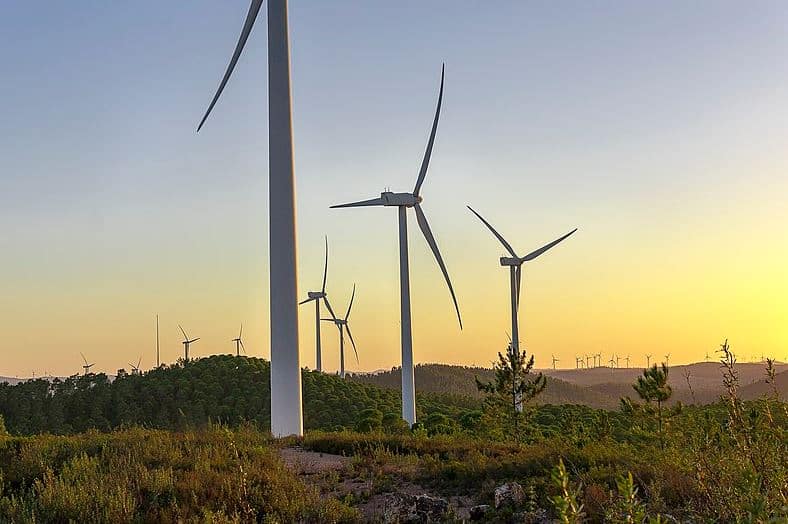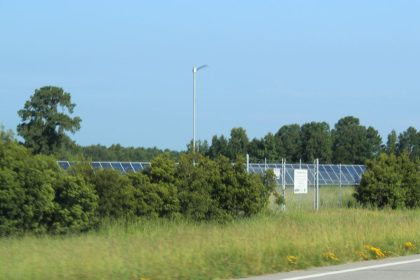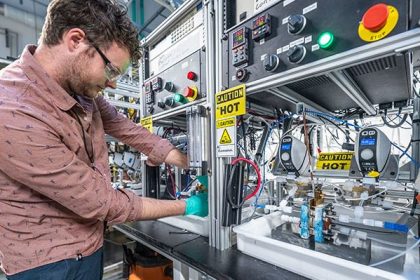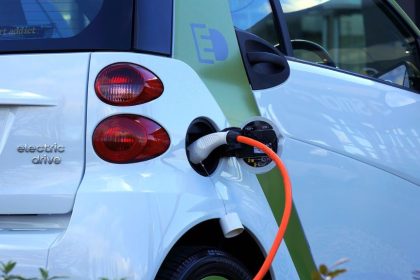The Knowns, And Known Unknowns of Achieving a National-Scale Renewable Electric Grid

As the Biden administration continues to push for a deal on an infrastructure bill that includes a sweeping number of renewable energy related projects, a team of researchers at the Department of Energy say they have growing confidence that reliable, 100% renewable power grids are now feasible.
The team of 17 power systems experts from the DOE’s National Renewable Energy Laboratory and Office of Energy Efficiency and Renewable Energy published their thoughts and findings in the journal Joule.
“Our paper offers perspective drawn from real-world experience in deploying variable renewables, the literature, and our team’s experience studying these issues in detail over the past two decades at a variety of scales—from our 2012 national-scale Renewable Electricity Futures Study to our 2021 work on LA100,” said Paul Denholm, NREL principal energy analyst and lead author of the paper.
“While our focus here is on the U.S. power system, many of the issues addressed and lessons learned apply more generally to other regions—and these are complex, multidisciplinary challenges that will require a lot of collaboration among the research community to solve,” he said.
For the purposes of their paper, the researchers defined a national-scale, 100% renewable-powered grid as one driven primarily by solar and wind power, with a small percentage of electricity coming from more localized sources, like hydro, biomass, geothermal and concentrated solar power.
They then took the further step of requiring the grid under consideration to physically operate with a 100% renewable energy supply at all times. This contrasts with systems, businesses, or corporate entities that achieve 100% renewable targets using renewable energy credits, offsets, or other financial mechanisms.
The authors then explored the future contribution of renewables in the U.S. electricity system along three lines: 1) what we know based on real-world experience, 2) what we think we know based on grid planning and operation studies, and 3) what we do not know without additional study or experience.
“Our emphasis is on questions we think can be addressed through technology development and engineering, but we recognize that other topics are critically important—from siting considerations, to energy equity concerns, to policy, regulatory, and market design challenges,” Denholm said. “We want to clear a path for resolving the technical and economic issues so that we can better address other complex aspects of the power system transition.”
Rather than focusing solely on the end goal of a 100% renewable grid, the team looks at how the challenges of incorporating renewables change with increasing deployment. This is partly due to the lack of detailed engineering analysis of 100% renewable systems at the national scale—but also because practical plans for achieving the target would not be developed from a blank slate. Robust 100% renewable solutions must consider how to optimally use existing power system assets.
“Ultimately, the engineering challenges, costs, and benefits of renewables vary as a function of their share of the generation mix,” Denholm said. “One-hundred percent is just one point on a continuum, so exploring costs and benefits at all levels of renewable deployment is useful.”
The researchers identified two basic challenges to reaching the 100% threshold.
The first is something they call “the Balance Challenge,” which boils down to making sure the power system can economically balance supply and demand at a variety of timescales — from the critical seconds-to-minutes scale required to withstand unexpected outages — to the seasonal scale that matches scheduled power plant outages and maintenance with periods of lower demand.
The so-called “Inverter Challenge” is similar to the Balance Challenge in that they both involve balancing supply and demand on various timescales.
But the Inverter Challenge is different in that its concerns are narrowly focused on a set of specific engineering considerations, as opposed to the broader economic issues associated with the Balance Challenge.
The Inverter Challenge is all about issues associated with transitioning to a grid dominated by inverter-based resources—primarily wind and solar PV generation, along with battery storage.
Most electrical energy in the United States is currently derived from turbines coupled to synchronous generators; the generators are electrically coupled and rotating at the same frequency.
To provide a reliable and stable grid, system planners and operators have leveraged several inherent characteristics of synchronous generators, including rotational inertia (stored kinetic energy in large rotating masses) and the ability to inject large amounts of current into the grid. These characteristics are the basis of traditional power-system stability and protection.
“Inverter-based resources have very different characteristics compared to synchronous generators, including a lack of physically coupled inertial response and, historically, a limited ability to provide large amounts of current under fault conditions,” said Ben Kroposki, director of NREL’s Power Systems Engineering Center and co-author of the paper. “So, as we rely more on inverter-based resources, they will need to provide services currently provided by synchronous generators—which may mean changes in the way the power system is controlled and protected.”
“There is no simple answer to how far we can increase renewable deployment before costs rise dramatically or reliability becomes compromised,” Denholm said. “As far as the ‘last few percent’ of the path to 100%, there is no consensus on a clear cost-effective pathway to address both the Balance Challenge and the Inverter Challenge at the national scale.
“Studies have found no specific technical threshold at which the grid ‘breaks,’ and we can’t just extrapolate from previous cost analyses because, when it comes to the future, there are many nonlinearities and unknown unknowns—things we don’t even know we don’t know yet.”
The authors say additional research is needed to evaluate the suite of technologies that can help ensure renewable supply matches demand patterns across all time periods—and that we will need significant engineering and design work to transition the grid from one that is dependent on synchronous machines to one that is based on inverters.
“The unanswered questions in our paper provide a research agenda for the analysis, technology R&D, and engineering needed to achieve cost-effective 100% renewable systems,” said Dan Bilello, director of NREL’s Strategic Energy Analysis Center and co-author of the paper. “Not only do we need new tools and data sets to advance future studies, but we need more uniform terminology and facilitated interaction between researchers and research organizations, especially across different fields.”























